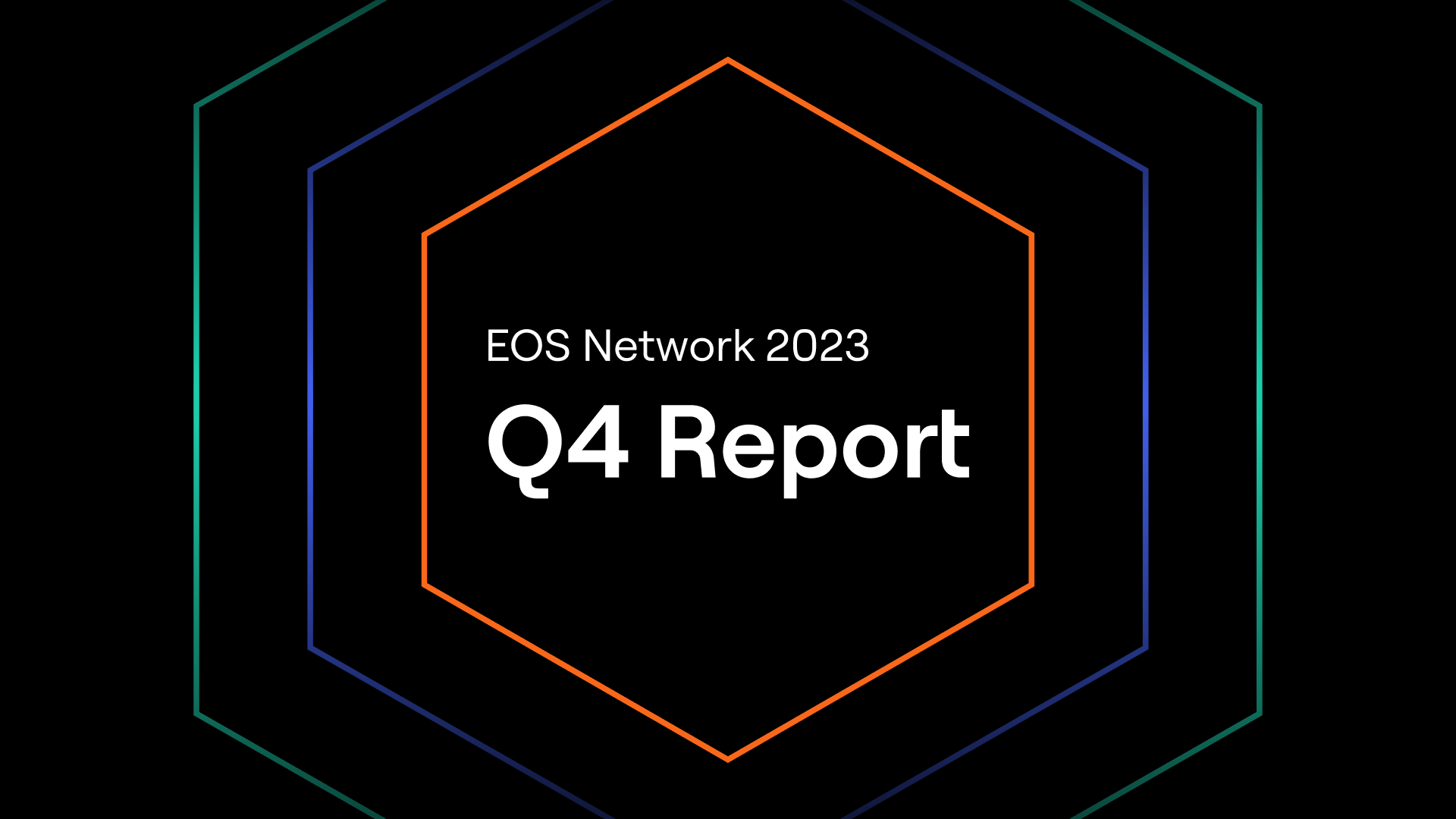1 second block intervals
950+ swaps per second*
~.01 EOS per transaction**
What do the fees cover?
- CPU/NET costs of transactions
- RAM costs for EVM Contract
- RPC Node operation costs
- Remainder can be allocated for future Burns
*Based on performance benchmark
**Based on native EVM transfer

Here’s how EOS EVM works
The EOS Network Foundation (ENF) has been making steady progress to accelerate the adoption of Web3 and help build bridges to other ecosystems. With the launch of EOS EVM, built on the EOS Network, now it is possible. The EOS EVM is an emulation of the EVM, housed within an EOS smart contract.
EOS EVM bridges the EOS ecosystem to the Ethereum ecosystem by allowing developers to deploy a wide array of Solidity-based smart contracts and innovative dApps on the EOS Network to make use of its world class performance and low gas fees. Developers can utilize Ethereum’s battle-tested open source code, tooling, libraries and SDKs while leveraging the superior performance of EOS to create a multichain Web3 experience.
Get started with EOS EVM
- EOS EVM Contract account: eosio.evm
- Ethereum Compatible RPC Endpoint: https://api.evm.eosnetwork.com
- chain-id: 17777
The EOS EVM Ecosystem
The EOS EVM Ecosystem has opened up a new world of opportunities for those who wish to leverage the performance, reliability, and low fees on EOS from within the familiar EVM framework. Here's a look at the EOS EVM Ecosystem. New projects are being added constantly.

Roadmap

Unmatched Compatibility, Speed and Performance
EOS EVM offers unmatched compatibility and feature parity with traditional Solidity environments. EOS EVM is showcasing unprecedented performance by benchmarking at 950+ swaps per second – which is 4x faster than the closest competitor.
The benefit is incredibly secure and scalable transactions that improve dApp user experiences and open the door to further innovation.

Trustless Bridge
Simplicity
Users can withdraw EOS directly from an exchange to their EVM account by providing an EVM address in the memo.
Coordinating Support
The Trustless Bridge is built into the EVM Contract. No trusted third party operator is required.
Building Together
Core to our mission is to build with and for the community. As such, we offer multiple funding resources for individuals and teams interested in joining our ecosystem to contribute to a stronger and open Web3 future.
Whether you are building on EOS EVM or EOS Native, there are plenty of resources and funding options available to help projects get up and running quickly.
Frequently Asked Questions
What is an EVM and what does it do?
How does EOS EVM differ from other EVMs?
What is the difference between EOS Native and EOS EVM?
What programming languages can be used to write smart contracts for EOS EVM?
What is the gas fee and how does it work in EOS EVM?
Are there any functionality limitations that can be achieved on Ethereum and not on EOS EVM?
How can I move EOS from an exchange to the EOS EVM?
Why can’t I send tokens to a CEX such as Binance through the EOS EVM bridge UI?
What are the primary domains for interfacing with the EOS EVM on testnet & mainnet?
- Ethereum Compatible RPC Endpoint:
api.evm.eosnetwork.com - Token Bridge: bridge.evm.eosnetwork.com
- Block Explorer: explorer.evm.eosnetwork.com
- Ethereum Compatible RPC Endpoint:
api.testnet.evm.eosnetwork.com - EOS EVM Block Explorer: explorer.testnet.evm.eosnetwork.com
- Token Bridge: bridge.testnet.evm.eosnetwork.com
- Token Faucet: faucet.testnet.evm.eosnetwork.com
What security measures has the EOS EVM undergone?
How can I share my EOS EVM project on the EOS Ecosystem page?
Where can I learn more about the EOS EVM?
What are the other EOS EVM projects in the Ecosystem?
Can I transfer USDT or other tokens that aren’t EOS with the EOS EVM trustless bridge?
The EOS Difference
Take advantage of superior performance, energy efficiency, high availability and liquidity of the EOS Network.
Layer-1 blockchain built using an open-source protocol
Unparalleled reliability with zero downtime in 5 years
Superior Performance as the only blockchain that's achieved 100m+ transactions per day
Energy efficiency and sustainability by design through a carbon neutral blockchain







